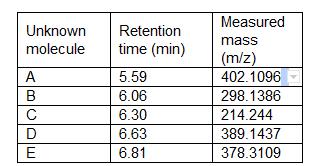Reports of research work funded by grants prior to 2016
Victoria University of Wellington
In vivo measurement of brain chemicals following the transition from drug use to compulsive drug use
S Schenk
School of Psychology
The objective of this research was to implement a sensitive procedure for measuring changes in brain dopamine and serotonin, and their metabolites, as a function of repeated, and extensive, exposure to 3,4 methylenedioxymethamphetamine (MDMA; “ecstasy”). We proposed to make use of a new Liquid Chromatography-Mass Spectrometry (LC-MS) procedure to analyse neurochemicals obtained via the process of in vivo microdialysis. The basic procedure involves the implantation of a probe comprised of a membrane that is selective for molecular weights of neurochemicals of interest. Once implanted into a brain region of interest, the probe is slowly perfused with artificial cerebrospinal fluid (csf), microdialysates are obtained ex situ and, under appropriate conditions, multiple compounds can be analysed concurrently. The microdialysates are then analysed using LC-MS methods. MS detectors measure the molecular weight of a compound, with any mass from 100 Da to over 3000 Da being detected simultaneously. This has the advantage that imperfections in chromatographic separation can be overcome by using software to deconvolute the different detected masses, meaning complicated samples can be analysed in shorter timeframes without having to undergo excessive method development.
The analysis of brain dialysates has been complicated for at least two reasons. First neurotransmitters are polyfunctional molecules often comprise both amine (basic) and carboxy (acidic) groups, meaning the compounds chromatographic performance is very sensitive to subtle changes in pH, making their separation difficult. To overcome this, we developed derivatisation methods to mitigate their pH dependency. We have successfully employed this method to quantitate serotonin and dopamine in rat microdiasylate, however extension of this methodology for other analytes has not been achieved. Moreover, currently we are only analysing the samples using detection of parent molecular ions yet modern LC-MS methods generally utilise fragmentation (MS/MS) and quantitation of daughter ions to reduce the likelihood of false positives. Optimisation of MS/MS conditions for targeted analysis is required to improve our detection limits and data reliability. Additionally, our Agilent LC-MS instrument is capable of carrying out untargeted MS/MS fragmentation in real-time, which could be applied to our microdialysates for the analysis of new neurochemical targets modulated by MA exposure. Again, this technique has not been utilised and requires full optimisation before it can reliably be used for screening samples for detecting new potential targets. Second, we needed to determine the LCMS acquisition parameters required to facilitate quantitative analysis of target analytes, but also optimise in situ MS fragmentation for untargeted compound identification “on the fly”.
The generous funds from WMRF were used to obtain preliminary data on the effects of repeated exposure to MDMA, the primary psychoactive component of the street drug of abuse, “ecstasy”. Data shown below are from 2 rats; one was pretreated with saline and the other with MDMA for 5 days prior to the test. This pretreatment produces behavioural sensitization to MDMA, as measured by enhanced MDMA-produce hyperactivity. On the test day both rats received an acute injection of MDMA and we measured the behavioural response as well as neurochemical changes.
The LC-MS returned 642 molecules for the dialysate from the control rats and 725 molecules in the dialysate from the MDMA-pretreated rat. A representative two-minute sample (acquisition time=5-7 min) of an 11 min ion chromatogram is presented below. Data from the saline-pretreated rat are in blue and data from the MDMA-pretreated rat are in red.

 The data indicate the power of the LCMS system and the potential to provide new and important information concerning brain changes that occur as a function of repeated exposure to drugs of abuse. A large number of molecules were identified in this short portion of the ion chromatogram. Stimulated release of molecules A, B and D are apparent in dialysates from both the control and sensitised animal. In two cases (molecules A and D), MDMA pretreatment decreased the magnitude of the signal and in one case (molecule B) MDMA pretreatment increased the magnitude of the signal. Molecule C is only present in the control, and molecule E is only present in the MDMA-pretreated rat. A thorough analysis of the entire chromatogram was not possible at this time but it is the approach that we propose to use as we continue the data analysis procedure. A manuscript describing our progress will be submitted to an Addiction journal within the next month or so. A grant application will be submitted to HRC this month in order to continue these studies.
The data indicate the power of the LCMS system and the potential to provide new and important information concerning brain changes that occur as a function of repeated exposure to drugs of abuse. A large number of molecules were identified in this short portion of the ion chromatogram. Stimulated release of molecules A, B and D are apparent in dialysates from both the control and sensitised animal. In two cases (molecules A and D), MDMA pretreatment decreased the magnitude of the signal and in one case (molecule B) MDMA pretreatment increased the magnitude of the signal. Molecule C is only present in the control, and molecule E is only present in the MDMA-pretreated rat. A thorough analysis of the entire chromatogram was not possible at this time but it is the approach that we propose to use as we continue the data analysis procedure. A manuscript describing our progress will be submitted to an Addiction journal within the next month or so. A grant application will be submitted to HRC this month in order to continue these studies.



